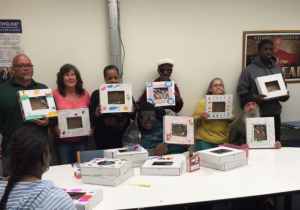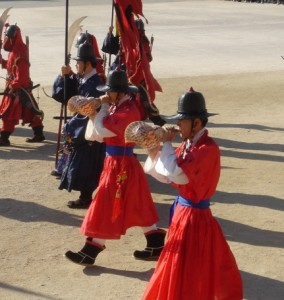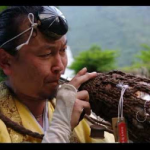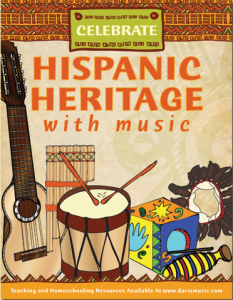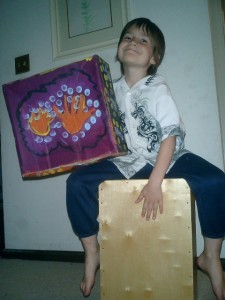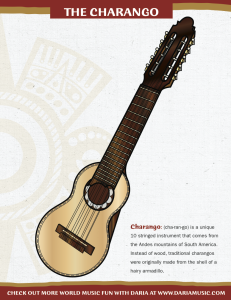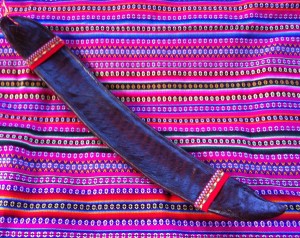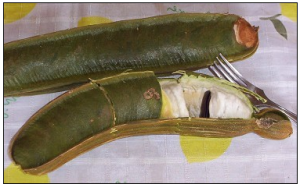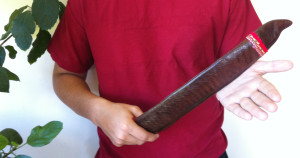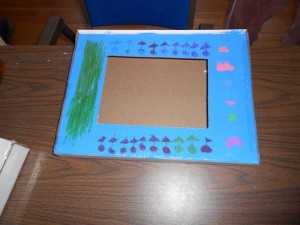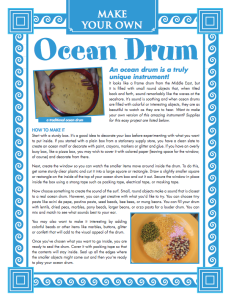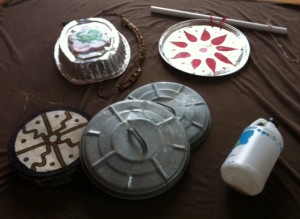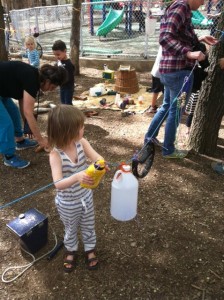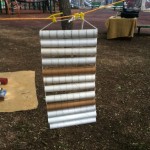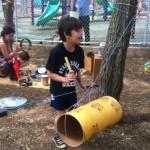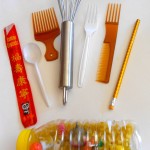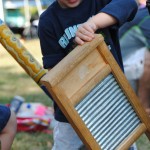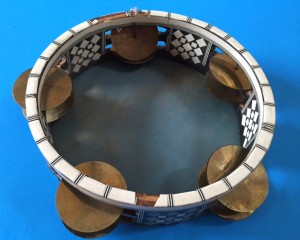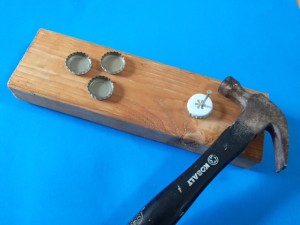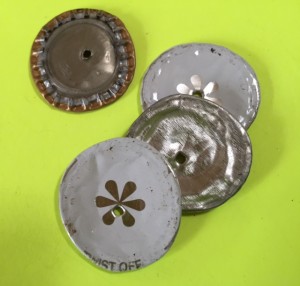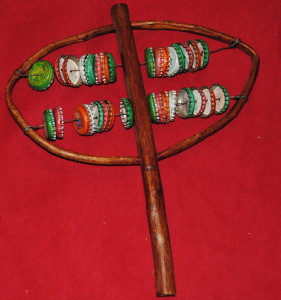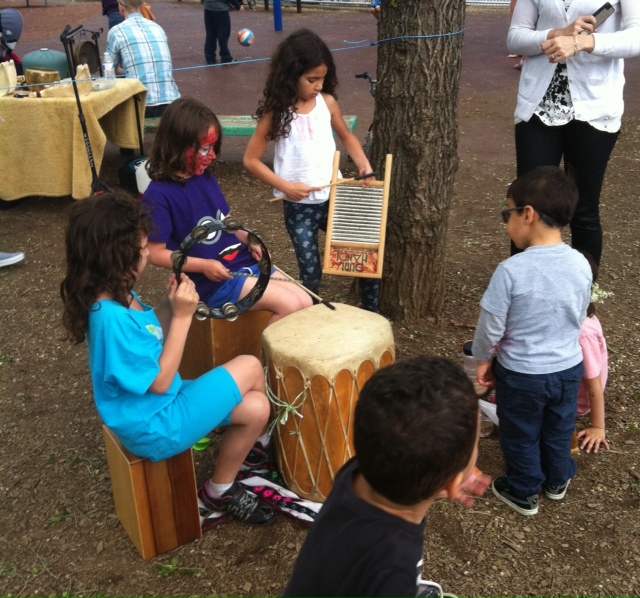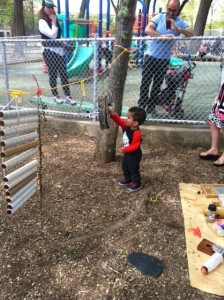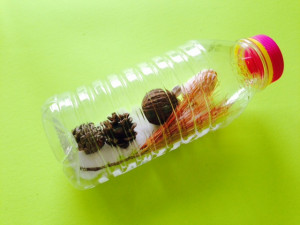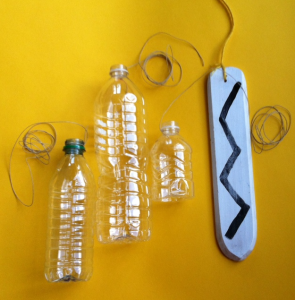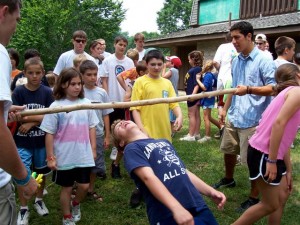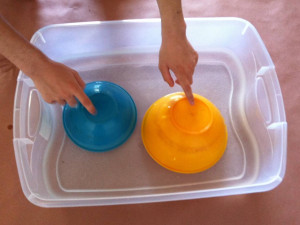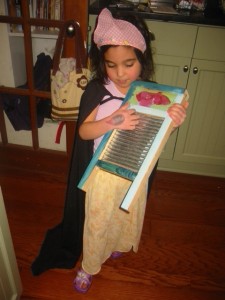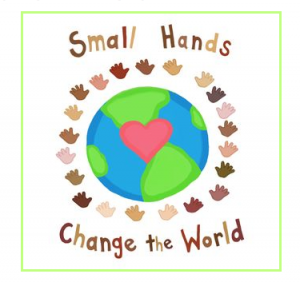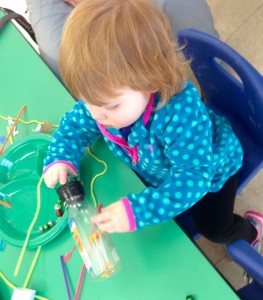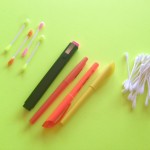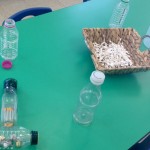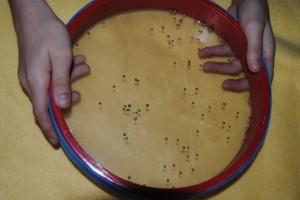 Have you ever heard an ocean drum? It’s an amazing instrument that sounds almost exactly like the soothing sounds of the surf? And – guess what? It’s a quiet instrument! It’s great for music and meditation as well as a quiet time activity. And it’s also perfect project to make and play for for any child or adult on the autistic spectrum.
Have you ever heard an ocean drum? It’s an amazing instrument that sounds almost exactly like the soothing sounds of the surf? And – guess what? It’s a quiet instrument! It’s great for music and meditation as well as a quiet time activity. And it’s also perfect project to make and play for for any child or adult on the autistic spectrum.
And, you can make it from all recycled materials!
What Is An Ocean Drum?
It looks like a frame drum from the Middle East, but it is filled with small round objects that, when tilted back and forth, sound remarkably like the waves at the seashore. It’s sound is soothing and when ocean drums are filled with colorful or interesting objects, they are as beautiful to watch as they are to hear.
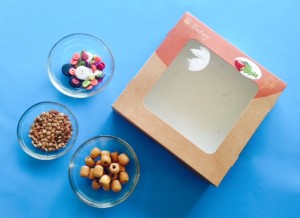 Here are the supplies you need to make one ocean drum:
Here are the supplies you need to make one ocean drum:
- A sturdy box: Flat shipping boxes, or any sturdy small box
- Clear plastic: You can recycle old report covers, salad bar containers, clear tablecloth covers or purchase a small amount of clear vinyl at a fabric or hardware store. Hint: Don’t use plastic wrap as it simply won’t hold up to the task.
- Strong tape: Packing tape, masking tape, or electrical tape are good choices.
- Contents for the drum: Choose any small fillings such as seed beads, pastina pasta, acini de pepe pasta, orzo, pony beads, mung beans, lentils, dried beans, marbles, or small pebbles.
How To Make It
Start with a sturdy box. It’s a good idea to decorate your box before experimenting with what you want to put inside. If you started with a plain box from a stationery supply store, you have a clean slate to create an ocean motif or 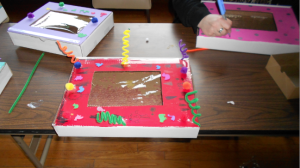 decorate with paint, crayons, markers or glitter and glue. If you have an overly busy box, like a pizza box, you may wish to cover it with colored paper (leaving space for the window, of course) and decorate from there.
decorate with paint, crayons, markers or glitter and glue. If you have an overly busy box, like a pizza box, you may wish to cover it with colored paper (leaving space for the window, of course) and decorate from there.
Next, create the window so you can watch the smaller items move around inside the drum. To do this, get some sturdy clear plastic and cut it into a large square or rectangle. Draw a slightly smaller square or rectangle on the inside of the top of your ocean drum box and cut it out. Secure the window in place inside the box using a strong tape such as packing tape, electrical tape, or masking tape.
Now choose something to create the sound of the surf. Small, round objects make a sound that is closest to a real ocean drum. However, you can get creative with what you’d like to try. You can choose tiny pasta like acini de pepe, pastina pasta, seed beads, bee bees, or mung beans. You can fill your drum with lentils, dried peas, marbles, pony beads, larger beans, or orzo pasta for a louder drum. You can mix and match to see what sounds best to your ear.
You may also want to make it interesting by adding colorful beads or other items like marbles, buttons, glitter or confetti that will add to the visual appeal of the drum.
Once you’ve chosen what you want to go inside, you are ready to seal the drum. Cover it with packing tape so that the contents will stay inside. Seal up all the edges where the smaller objects might come out and then you’re ready to play your ocean drum.
This is a fun instrument to explore. Here are a few techniques you can use when playing it:
Tilt it back and forth at gentle angles
Tilt it back and forth at more extreme angles
Tilt the drum for a gentle swooshing sound then turn it on its side to stop the sound
Tap the sides or top with your fingertips
Shake your instrument as if it were a rattle.
Many people find the sound and the changing patterns very calming and meditative. You can relax and play it without any other accompaniment or you can play this instrument along with soothing music or any of your favorite songs. Try to match the beat by tilting the ocean drum along with the rhythms of the song.
If you enjoy this type of drum, you may want to make several as each one will have a distinct sound or might fit better with different musical styles that you enjoy.
Feel free to experiment and make this unusual instrument all your own!

